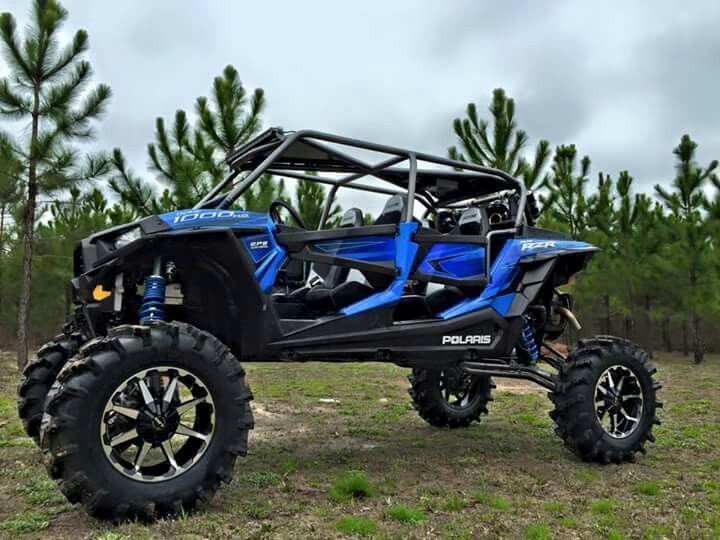Sand riding is one of the funnest ways to enjoy your ATV or UTV. Sand can be tough on your machine though, there are steps to take before a weekend at the dunes to make sure your ATV can handle it. Sand dunes can be found throughout the world, from coasts and plains to desert areas, sand dunes attract a lot of ATV/UTV riders, and for good reason. Here are some things I learned about sand dune riding on an ATV or UTV.
Sand getting into your engine can cause huge problems, it’s always best to prep you machine for sand riding before you hit the dunes. Your tires will spin more than usual in sandy conditions, this puts extra strain on your engine. It’s a lot harder to find traction in the sand than it is on normal packed dirt trails. Of course paddle tires give you excellent traction, but your engine will still be operating harder than usual.
Decreasing the weight of your machine will have huge benefits when riding through sand. A lighter ATV will almost float on top of the sand, and give you better traction when riding. You don’t want to be bogged down by unnecessary weight in the sand dunes. Having a heavy skid plate, for example, will do more harm than good.
You do however, want something like a belly pan skid to prevent your quad for catching on the sand and getting you stuck. Aim to go with lighter weight tires too. If you don’t have paddles tires, at least don’t go with heavy stiff aftermarket tires. They are great at preventing punctures, but terrible in sand, there aren’t to many obstacles that could puncture a tire in the sand dunes anyway. I’ve had good luck with stock lightweight tires in the past.
It’s always a good idea to keep your quad greased up properly, especially before a sand dunes trip. Make sure your axle carrier is greased up, as well as the swing arm pivot and suspension linkages. It will keep your mind at ease and the quad up to par for the dunes.
I found that while you go through and grease the different parts on your quad, it’s a good time to do a once over of the machine.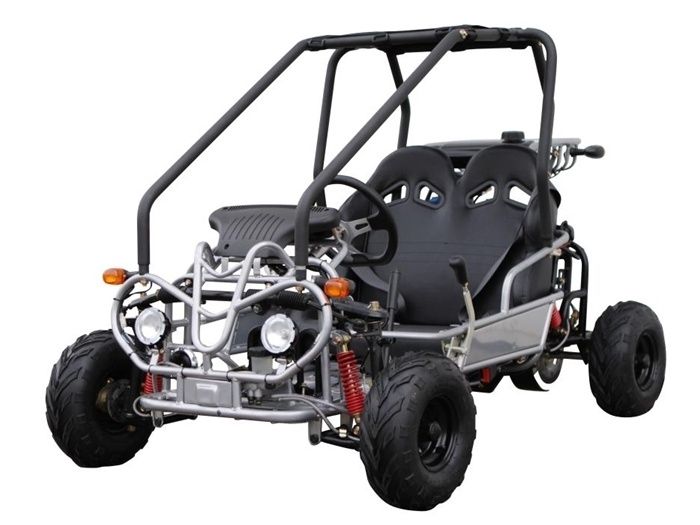 Check for loose cotter pins, or anything that could be lost in the sand. Tighten up loose nuts and bolts and so on. If you lose a part in the dunes, it’s like trying to find a needle in a haystack.
Check for loose cotter pins, or anything that could be lost in the sand. Tighten up loose nuts and bolts and so on. If you lose a part in the dunes, it’s like trying to find a needle in a haystack.
Getting some fresh oil in your engine will help. You will be working your engine and transmission more than usual, it’s best to keep it protected. Change the oil filter while you’re at it, with a 2-stroke engine your oil should last longer. But in a 4-stroke, I highly recommend changing the oil and oil filter if it’s been a while.
Keep in mind the gear box oil. You also want to make sure your clutch and transmission stay in good shape. If you are good about routine maintenance, you should be fine. But if its been a while since you’ve done any of these things, it’s a good idea to get them done before you go riding in sand.
Last but certainly not least, the air filter. It’s very important to make sure your air filter is clean and oiled up properly. Dust and dirt will get everywhere, your air filter is the only thing protecting your motor from the damaging sand. If you have a flange type air filter make sure to grease the flange, that will prevent sand from getting around the filter and into your engine. If you don’t protect your engine from sand, it will become a costly mistake that’s for sure.
Dust and dirt will get everywhere, your air filter is the only thing protecting your motor from the damaging sand. If you have a flange type air filter make sure to grease the flange, that will prevent sand from getting around the filter and into your engine. If you don’t protect your engine from sand, it will become a costly mistake that’s for sure.
One of the best methods I’ve seen for keeping sand out of your motor is a well oiled K&N filter with a filter charger on it. If you have a fabric type filter, they work great in sand. If you need a new air filter you can find them for almost any ATV online, here is a link to Amazon to get your search started. If your air filter is just too clogged up to clean it all the way, it’s best to just replace it.
Getting the tire pressure in your tires right makes a huge difference for sand riding. If you have paddle tires, you will already be getting excellent traction. But,
I just use regular stock tires set to 3-4 psi.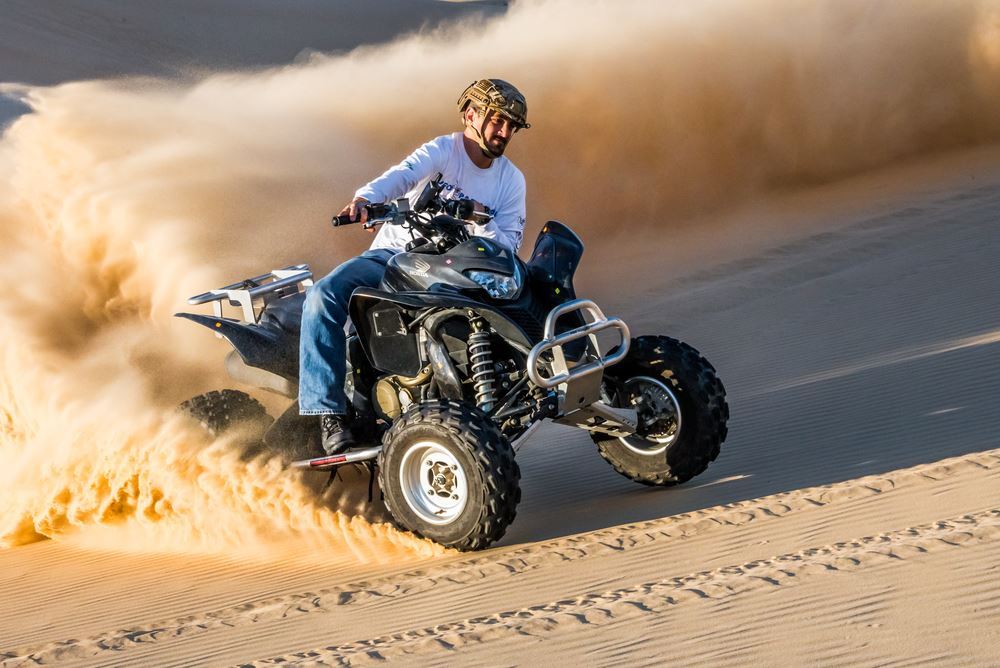 The key here is to get just enough pressure to keep the tire seated on the rim. With a soft tire set to a low psi, your quad will feel like it’s floating through the sand.
The key here is to get just enough pressure to keep the tire seated on the rim. With a soft tire set to a low psi, your quad will feel like it’s floating through the sand.
It’s also recommended to lower the pressure in paddle tires too. The idea behind this is that with a lower tire pressure your tires create a flat spot where they touch the ground. That creates better traction, and keeps your quad from sinking into the sand.
If you are using a UTV, I would aim for around 8 psi, because UTV’s are heavier than a standard size quad. If you have 14 inch wheels on your UTV, try staying around 10 psi. I wouldn’t go much lower than that unless you have beadlock rims. Beadlock basically holds your tire’s seal better, allowing you to deflate the tires even more without them falling off the rim.
Avoid going out in the sand with heavy stiff aftermarket tires. These types of tires are designed to work well on rocky terrain or on a track, but don’t do well in sand. Once you have a tire that works well in sand, and the tire pressure set right, you’ll be floating the dunes in no time.
Once you have a tire that works well in sand, and the tire pressure set right, you’ll be floating the dunes in no time.
Paddle tires were made for riding in the sand dunes. An ideal setup would be to have mostly smooth front tires and paddle tires on the rear. There are different types of paddle tires depending on which type of riding you prefer. I enjoy the V-cup paddle tires, which are more for fun, sliding through the sand, and playing in the dunes. But, straight-cup paddles are better for quick straight line racing or hill climbing the dunes.
V-cup paddles allow you to slide more easily through the sand, while straight-cup paddles are better for straight line acceleration. It’s all personal preference here, get the tire that fits your style of riding the most.
Things to consider when choosing a paddle tire:
For the front, you can leave the stock tires if you’d like.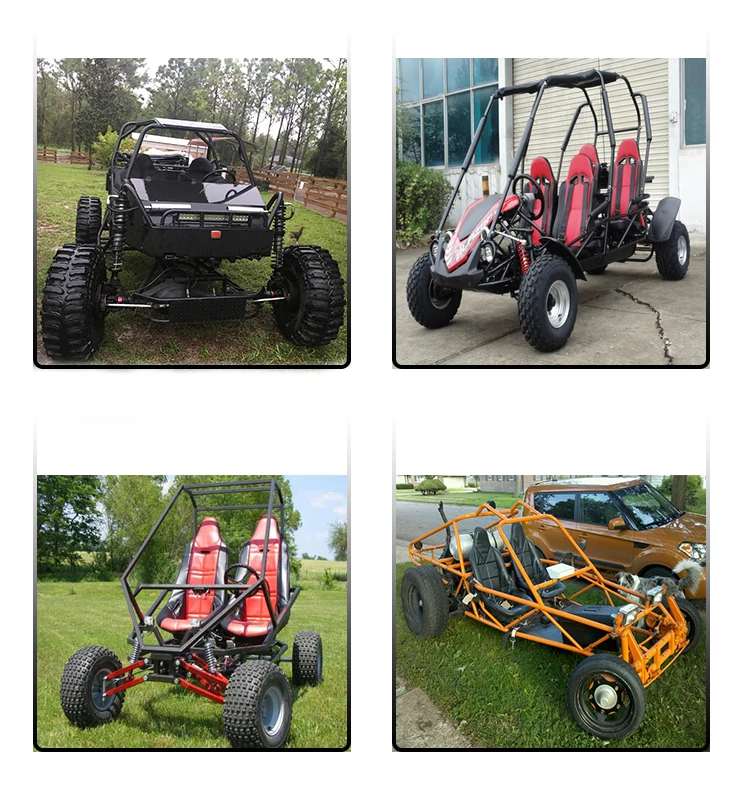 They work fine, but will throw a lot of sand up, sometimes getting sand in your face. The best solution is a smooth front tire with a single rib down the center, like a mohawk. This type of tire allows you to turn and float on the sand well, and helps keep from kicking too much sand up. They do make completely smooth tires, but you will have a hard time turning with these. They are mostly used for drag racing in sand, where the rider wants as little friction from the front tires on the sand as possible.
They work fine, but will throw a lot of sand up, sometimes getting sand in your face. The best solution is a smooth front tire with a single rib down the center, like a mohawk. This type of tire allows you to turn and float on the sand well, and helps keep from kicking too much sand up. They do make completely smooth tires, but you will have a hard time turning with these. They are mostly used for drag racing in sand, where the rider wants as little friction from the front tires on the sand as possible.
Now that you’ve got your ATV sand proofed and the tire pressure set, you’re ready to ride. Even though sand dunes are a pretty safe place to ride, there are some safety precautions to consider. A lot of people like to have these Safety Flags found here on Amazon, or something similar. As always, wear proper safety gear. If you want to check out some tried and tested ATV gear, visit the Recommended Gear section of this site. Better safe than sorry.
Here’s a list of sand riding tips to help get you started:
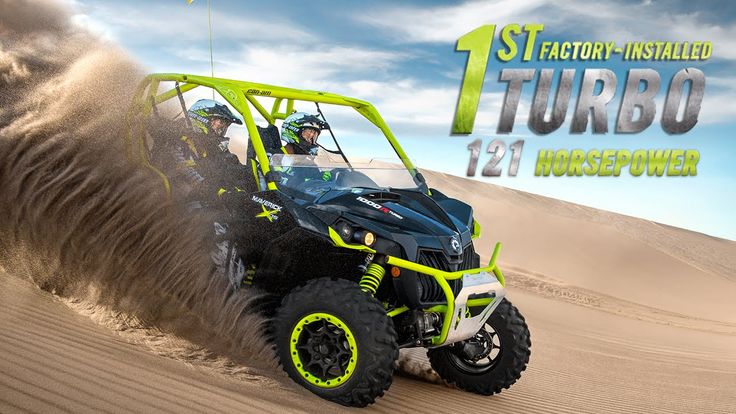
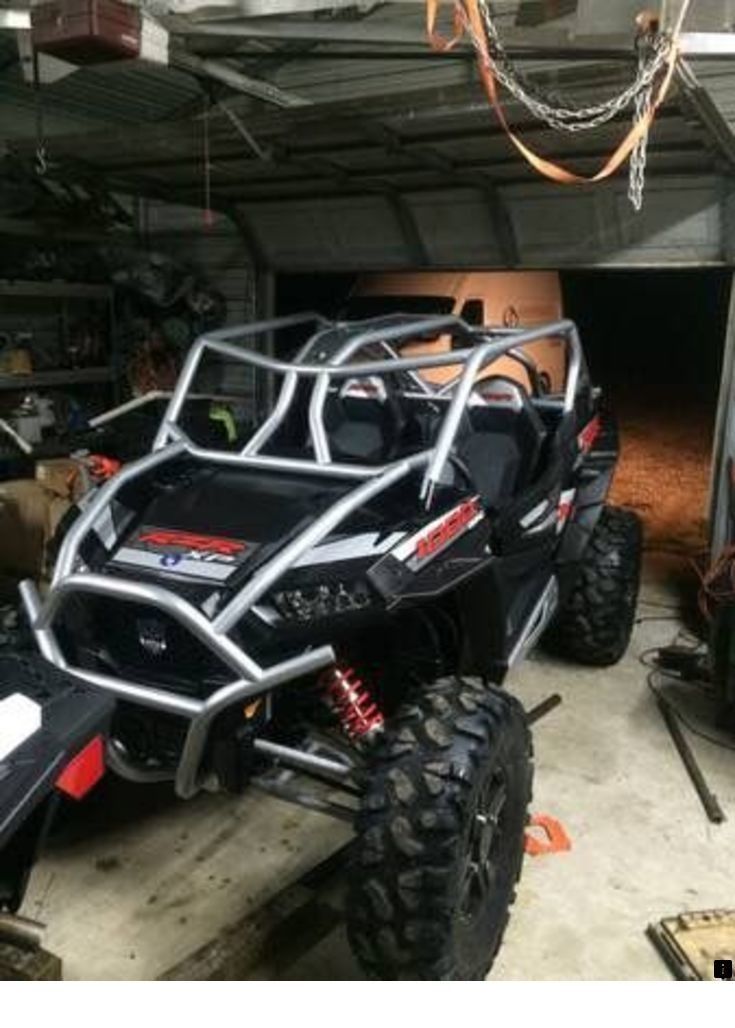 I hate when I see people try to stay on the ATV in a losing battle. The quad will end up tipping, and someone could get hurt.
I hate when I see people try to stay on the ATV in a losing battle. The quad will end up tipping, and someone could get hurt.Sand dunes are typically some of the safest places to ride an ATV or UTV. If you ride within your skill level, and follow these safety tips, the likelihood of an accident are pretty low. Still, accidents do happen, so make sure you’re wearing proper safety gear.
It is not recommended to race anywhere within 100 feet of any camp or buildings. Try to keep it under 15 mph as you pass other riders. And most importantly, just use common sense while you’re out there. There’s plenty of space in the sand dunes for racing and jumping without endangering anyone.
Try to ride with a group if you can, if not, at least ride with one other person.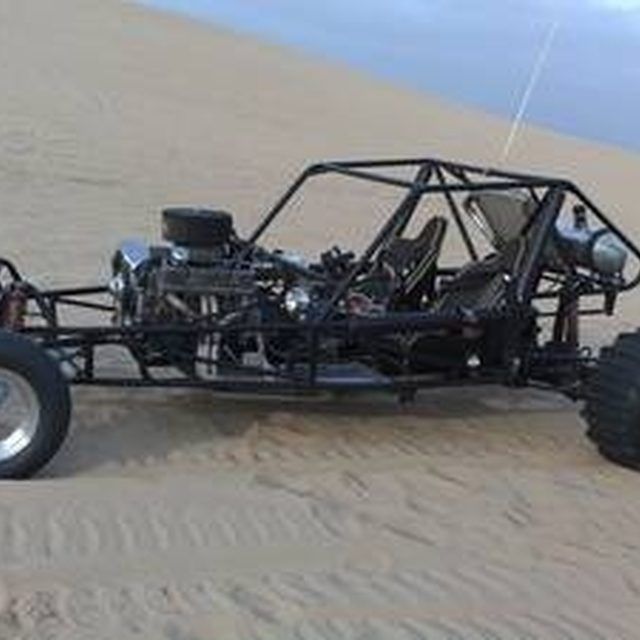 Having another set of eyes always comes in handy if something goes wrong. If you’re new to the area, take it slow and scout things out a bit before going balls to the wall.
Having another set of eyes always comes in handy if something goes wrong. If you’re new to the area, take it slow and scout things out a bit before going balls to the wall.
Here is a list of things worth considering to have with you, with links to Amazon for those items:
Water is last on that list, but it’s one of the most important. You have to stay hydrated out in the sand dunes. You lose a lot of water just normal trail riding, and in the dunes, it’s even worse. Bring some extra water bottles, it’s better than having to cut a riding day short because of dehydration.
Keep watch for holes and indents made in the sand by the wind. Some people call them witches eyes because they are hard to see, and if you hit one, it could throw you off your quad.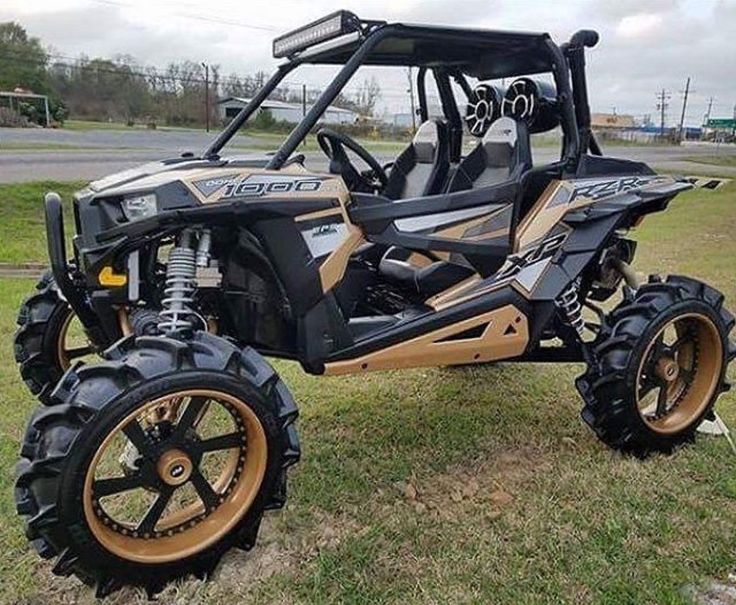 It’s a bit easier to see if you use tinted goggles, but there’s nothing to block the sun in the dunes.
It’s a bit easier to see if you use tinted goggles, but there’s nothing to block the sun in the dunes.
It’s easy to get lost riding in the sand dunes, and even more so at night. If you’re going to be riding at night, get some bright 12V light bars on your quad, like this LED Light Bar found here on Amazon, if your headlights aren’t going to be bright enough.
That’s it! Sand riding is such a blast, if you prep your ATV or UTV the right way, and follow proper safety procedures, I know you’ll have the time of your life. It’s easy to get hooked riding in the sand dunes, what started as a one time thing to try out, turned into annual long weekend trips for us. Most importantly, have fun floating the dunes!
Sharing is caring!
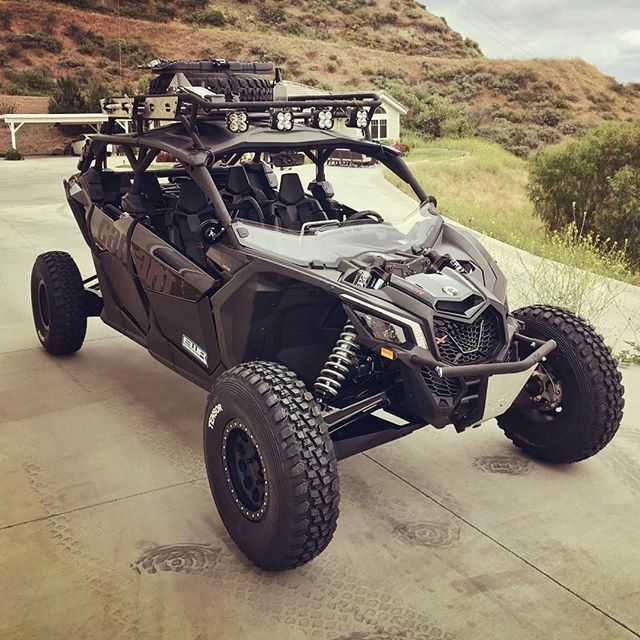
Delivery options and delivery speeds may vary for different locations
Sign In
or enter a zip code
Email * Password *
REPAIR & HOW TO
MAINTENANCE
TROUBLESHOOTING
GUIDES
TIPS & TRICKS
ALL ARTICLES WATCH VIDEOS ABOUT US SHOP PARTS CONTACT US
Whether you prefer two wheels or four, there’s nothing quite like taking your ATV or dirt bike out for a ride in the dunes. From beaches to deserts, there's no shortage of options for planning your next sand-dunes trip.
Preparation is the most important part of a successful dune riding trip, but can be easy to overlook when you're anxious to go. A heightened awareness of your surroundings can also be the ultimate difference maker on how well your sand dune trip goes. We all might enjoy a good learning experience, but these painless recommendations will get your powersports machine ready for the sand. Here are 5 tips on how to prep your ATV or dirt bike for riding the sand dunes.
Here are 5 tips on how to prep your ATV or dirt bike for riding the sand dunes.
If you’re an experienced dune rider, you know how much harder you have to work to ride on the sand. That means your engine has to work harder too. Doing an oil change is good practice before a demanding trip to the dunes. While you're attempting to roost your friends, the rotations per minute (RPM) on your machine are running higher than normal, resulting in much higher engine temperatures.
Giving your dirt bike or ATV proper lubrication helps it perform for you without failure. The gearbox's metal pieces that keep your engine and transmission running require lubrication so you can have fun shredding up the sand as they turn and burn.
Dune Riding Prep Tip 2: Clean and Replace the Air FilterClean airflow is essential to your engine's performance while riding in the dunes. No matter how hard you try to prevent it, sand will find its way to the air filter, and it’s up to you to keep it out of the engine.
No matter how hard you try to prevent it, sand will find its way to the air filter, and it’s up to you to keep it out of the engine.
Not every machine uses the same style of filter, and each version needs a second layer of defense to keep sand out of the system. When using a foam filter, keep it clean for each ride. Plan ahead and stock a few extra filters for every bike or ATV on the trip. Even if you plan on getting into the air box on a daily basis for cleaning, riding with an air filter cover is a no-brainer. If you’re riding with a press-flange air filter, grease it up to seal the edges. And if you really love your machine, get a trusty air filter kit with an outerwear sand cover.
Dune Riding Prep Tip 3: Lube the Chain and Swap the SprocketSand gets everywhere, and no matter how rugged your bike or quad is, you'll find sand in places you never thought possible. It's one of the most abrasive substances your machine will come across in its lifetime.
It's one of the most abrasive substances your machine will come across in its lifetime.
Sand grinds through raw metal like you wouldn’t believe. Using chain lube helps keep sand from blasting the chain, and can reduce wear-and-tear on parts. Aluminum is light, but steel stands the test of time. As the sand blasts the sprockets time and again, you want to have confidence in their ability to last. By swapping out your current sprocket with a steel replacement, the drivetrain on your dirt bike or ATV will last much longer.
Dune Riding Prep Tip 4: Choose your Tires and Adjust the PressureGetting traction in the sand can be a tricky skill to master, even for experienced riders. For this reason, throw some paddle tires on your machine to make life a bit easier.
From straight-cup to V-cup tires, there are many options to choose from for intense hill climbs or pure roosting ability. Not everyone wants to throw down their hard earned money for a new set of tires, so making adjustments with the current setup is also an option. By running your sport tires at the lowest air pressures that keep the bead in place, your machine will float in the sand much easier.
Not everyone wants to throw down their hard earned money for a new set of tires, so making adjustments with the current setup is also an option. By running your sport tires at the lowest air pressures that keep the bead in place, your machine will float in the sand much easier.
Riding on the dunes is one of the most adrenaline-fueled activities a powersports vehicle rider can experience, but it's also one of the most dangerous.
Although motorsports playgrounds offer wide-open vistas and miles of land, you’d be surprised how easy it is to get disoriented or caught off guard by a shadow hiding another rider. While flying up and over a tall dune, it’s nearly impossible to see what or who is on the other side. This is where a good flag comes into play.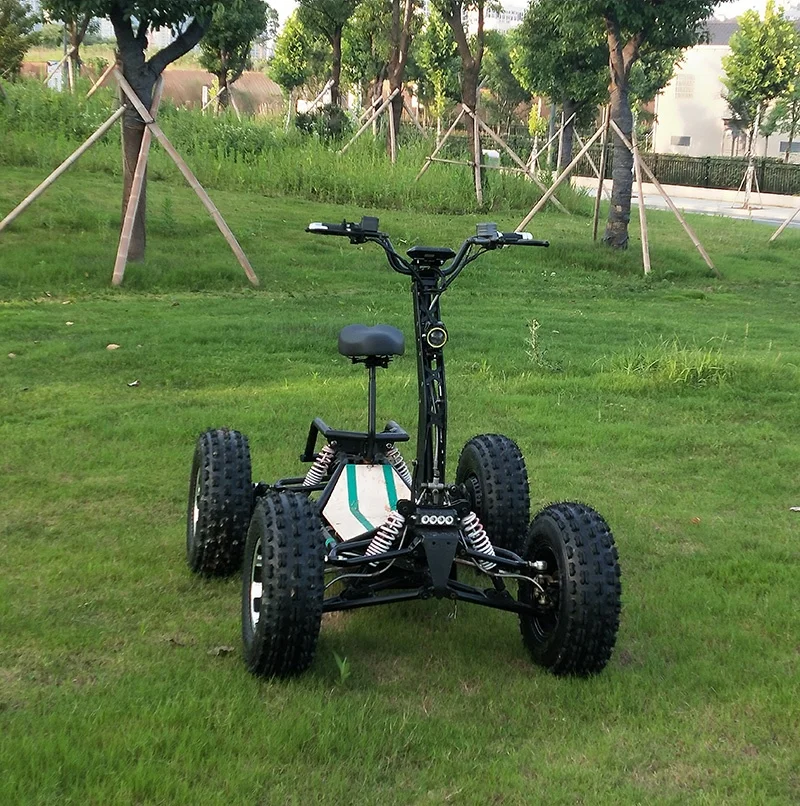 While prepping for your trip, get a bright flag for your machine that stands at least 8-feet tall.
While prepping for your trip, get a bright flag for your machine that stands at least 8-feet tall.
Whether it's beaches or the desert, riding in the sand is grueling on an off-road vehicle. With some preventative maintenance, your dirt bike or ATV can be outfitted to run smoothly over the dunes, and save you time and money for your next trip. Happy shredding!
body
Maintenance of the ATV after winter extends the life of the components and reduces the likelihood of breakdowns in the peak of the season. What to check - we will tell in the article.
Gasoline should preferably be replaced with fresh gasoline, as fuel deteriorates during long-term storage - fractions evaporate, the octane number becomes lower, oxidation and precipitation occur.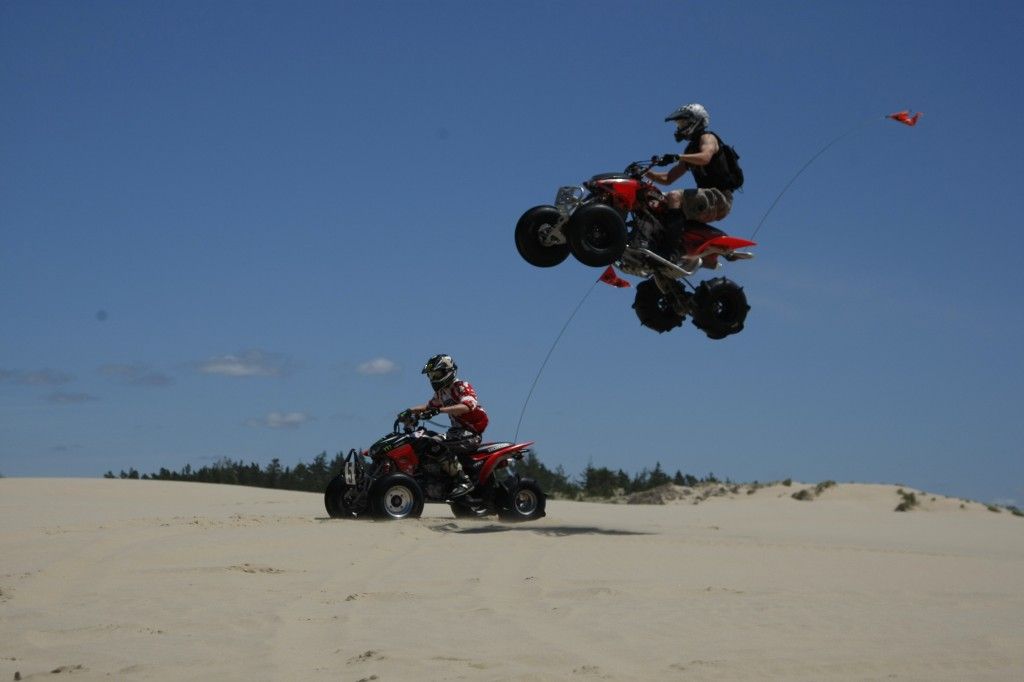 The use of such gasoline can lead to serious damage to the piston group and the fuel system.
The use of such gasoline can lead to serious damage to the piston group and the fuel system.
If the oil was not changed before storage in the gearbox, engine and gearboxes, this should also be done in preparation for the season. You should also check the level of antifreeze and brake fluid.
If the battery charge is less than 12.5 V, it needs to be charged. To remove plaque on the terminals, cable lugs and the battery case itself, you can use a sponge soaked in a solution of baking soda in water.
Suspension. Levers and dampers should be checked for play. There should be no cracks or tears on the anthers of the CV joints, and oil smudges on the shock absorbers. Grease must be pumped through the grease fittings.
Cardans. Cardan shafts are also checked for play. Crosses and slotted joints in the presence of grease fittings are injected.
Variator. To remove dirt, it is advisable to blow it with compressed air. Lubrication of weights and other parts of the CVT is usually not required - but it is better to check the owner's manual for a particular model.
To remove dirt, it is advisable to blow it with compressed air. Lubrication of weights and other parts of the CVT is usually not required - but it is better to check the owner's manual for a particular model.
The drive belt must be free of cracks and broken teeth.
It is important to check that all visible fittings, seals and hoses are sealed and that there are no oil leaks on the engine.
Candles. Spark plug insulator is normal light brown or brown - a different shade may be associated with an engine malfunction. The gap between the electrodes must correspond to that specified in the manual.
To clean candles from carbon deposits, you can put them in a container with household chemicals against plaque and rust and wait half an hour, then brush, wipe and dry completely - but it's better to buy new ones.
Air filter . A dirty foam filter is replaced with a new one or cleaned - for this it must be washed in warm water with Fairy or in a special agent, squeezed a little (without twisting), dried and soaked in filter oil.
Radiator. Even after 1000 km, a lot of dirt accumulates in the radiator, so it is advisable to blow it out with a compressor, after removing the protective grille. An alternative method of cleaning is with a watering hose. The use of a pressure washer is not recommended due to the high risk of comb damage.
The exhaust pipe of the ATV contains a spark arrestor, a fine mesh pipe designed to keep fire out and prevent dirt from entering the muffler. It is also better to clean this part before the season.
The remaining thickness of the brake discs and pads must be checked. Check that the hoses are intact and that the brake lever does not have excessive travel.
By taking the wheel on the sides and shaking it in different directions, you can check the wheel bearings and bushings for play. Grease fittings are often provided on the knuckles through which grease must be pumped.
When preparing the ATV for the season, the tires are checked for tread wear and sufficient pressure.
The minimum remaining tread depth is stated in the owner's manual, typically 3mm.
It is important to check that the high and low beams, parking lights, hazard warning lights, turn signals, horn, winch and heating are working properly.
Apply electrical insulating grease to connectors exposed to water and dirt.
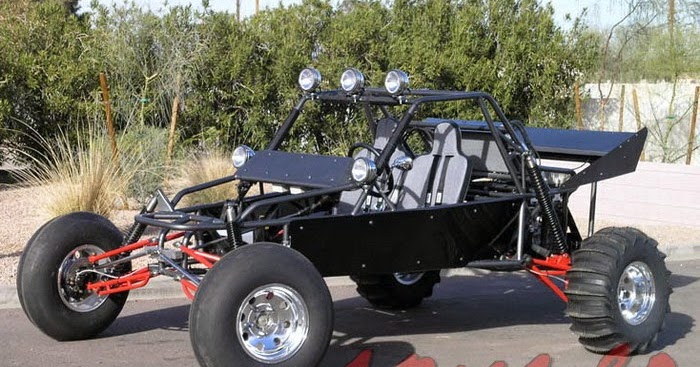
Stels ATVs have long conquered the expanses of Russian off-road. If you ask any quad rider what he likes most about this sport, you will most likely baffle him, it is so difficult to choose one from the whole host of sensations. Someone will remember the indescribable feeling of speed, someone likes riding in the mud, and someone loves to fly over the dunes. However, for many, jumping on a quad bike is the most exciting experience. ATV jumps vary from taking off a little on a random bump to flying off a springboard, but it's definitely one of those hard-to-forget-feelings, just as hard to forget any feeling of free-flying. After all, the heart stops even for those who simply watch the flight from the side.
However, in order for the thrills not to have tragic consequences, it is necessary to prepare not only yourself, but also your device before flying. How to ensure your safety when jumping?
Of course, you shouldn't do extreme sports without protective equipment, make sure that your body is protected as much as possible and at the same time the equipment must be of high quality to provide sufficient freedom of action.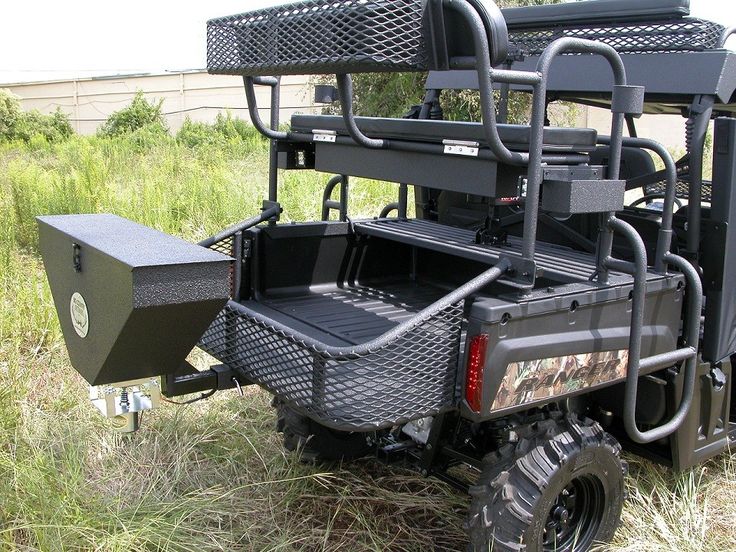 Try to get a complete set from boots to a helmet and goggles and be sure to protect your body well, because you will be in the air with a device weighing several centners, in case something goes wrong you will need reliable protection.
Try to get a complete set from boots to a helmet and goggles and be sure to protect your body well, because you will be in the air with a device weighing several centners, in case something goes wrong you will need reliable protection.
First of all, you need to remember the basics of jumping, which is that when taking off and landing, your front wheels should be slightly higher than the rear ones, and you need to keep the ATV in the air in such a position during the entire flight. Then the rear wheels will touch the ground on landing earlier than the front wheels, which will soften the impact when touching the ground. Landing on the front or all four wheels takes most of the impact on the ground, which is enough energy to throw you out of the saddle.
The second rule of extreme jumping is not to sit while jumping. You have to stand in the ATV, or at least raise yourself in the saddle, only then your legs will act as an additional shock absorber, helping to soften the impact. Otherwise, having taken a hit on the fulcrum, you can easily fly out of the saddle at the moment when, after compression, the shock absorbers are again unclenched. Allow the craft to move under you in flight, and by lifting yourself off the seat, you will have more freedom to move your body and balance, which will allow you to adjust the angle of the entire craft-racer system.
Otherwise, having taken a hit on the fulcrum, you can easily fly out of the saddle at the moment when, after compression, the shock absorbers are again unclenched. Allow the craft to move under you in flight, and by lifting yourself off the seat, you will have more freedom to move your body and balance, which will allow you to adjust the angle of the entire craft-racer system.
There are two ways to achieve the desired angle, controlling the position of the body and using the accelerator. When approaching the liftoff point, lean back to lighten the load on the front wheels, control the throttle smoothly, preventing the ATV from tilting forward after the liftoff. If you understand that the speed for the jump is too high, slow down slightly, and just before the takeoff, release the brakes and squeeze the gas. It is important to choose the right acceleration so that it is not too large and at the same time too small. In general, the choice is determined by many parameters and is usually selected individually by the rider for his ATV. That is why you can move on to ski jumping only after preliminary training on small jumps. This is especially important if you are riding this ATV for the first time, before going into sharp turns, experiment on small obstacles.
That is why you can move on to ski jumping only after preliminary training on small jumps. This is especially important if you are riding this ATV for the first time, before going into sharp turns, experiment on small obstacles.
When jumping on a quad bike, you may find that not everything goes as it was originally intended, and you usually notice this when you take off from the ground. Your ski jump might actually be steeper than you thought, you might yank the handlebars too hard or add too much throttle and the quad will become vertical in the air. In this case, begin to shift your body weight forward by pushing down on the handlebars to lower the front wheels down. Release the gas and apply the rear brakes. Oddly enough, they can help you even if the wheels are no longer touching the ground. The fact is, stopping the rotation of the rear wheels causes inertia to lower the front wheels down. In order not to cut off the engine, do not forget about the traction when braking in the air.